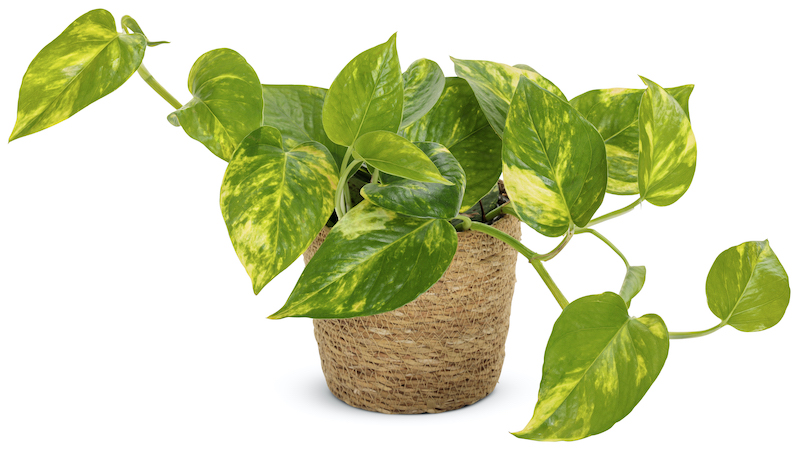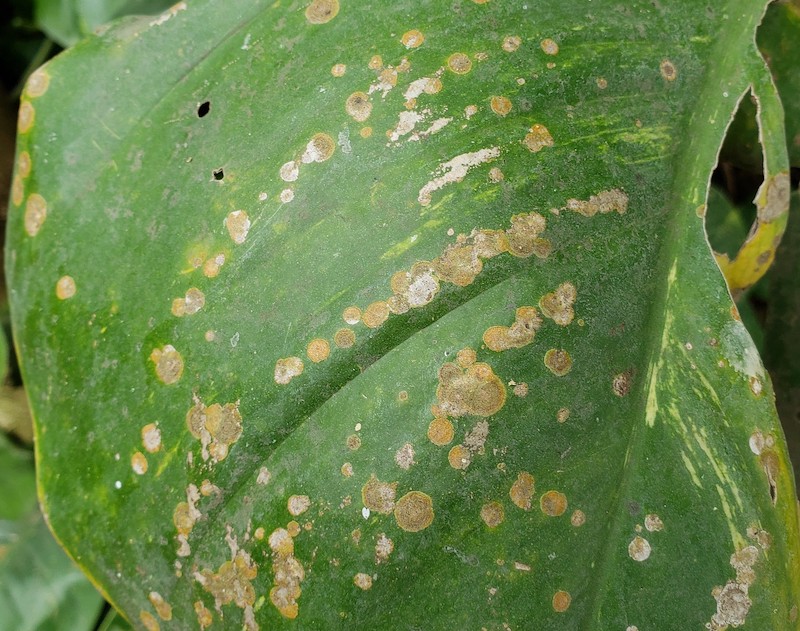Pothos Is Dying
Pothos thrives in indirect light with moderate water and humidity. Native to the tropical islands of the South Pacific, these plants can climb trees and trail many feet with the right conditions. Pothos are hardy plants that will tolerate a variety of growing conditions but a Pothos that is not given optimal growing conditions will begin to show signs of distress.
A change in the foliage is the first sign of a health problem. Withered, drooping, or limp foliage points toward watering issues. Yellowing, browning, or falling foliage can be signs of disease. Strange residues, marks, or holes can be signs of a pest infestation. These signs and signals should prompt you to take action and provide a more optimal environment for your Pothos to grow and thrive in.

Pothos Leaves Turning Yellow
There are several reasons why your Pothos leaves may be turning yellow. A few varieties of Pothos have a naturally yellow hue such as the fully chartreuse Neon Pothos or the yellow variegated leaves of some Golden Pothos. If the yellowing is not natural, it could be due to over- or under-watering. If the yellow leaves feel soggy and limp, over-watering is the culprit, and you should allow the plant and soil to dry out. If the yellow leaves are dry, crispy, and brittle, under-watering is likely the problem, and you should water thoroughly.
Older leaves of Pothos can also yellow and then die; these leaves can be removed from the plant without causing any harm. Other reasons for yellowing leaves include fungal diseases and pests. Lastly, yellowing can indicate a nutrient deficiency.
Pothos Pests
Pothos plants are fairly resistant to pests, but they can be harmed by common houseplant pests, including thrips, spider mites, scale, and fungus gnats. These pests can be controlled with regular cleaning of the foliage and good watering practices. Regular scouting is a good maintenance practice that can help to catch any signs of pests before you have an infestation. Closely examine and clean both sides of the plant’s leaves as well as stems for any signs of insects. Yellowing leaves, sticky residues on foliage, webbing, powdery substances, and holes in leaves are all signs of pest damage.
Pothos Diseases
Pothos is easy to care for, but it can be vulnerable to common houseplant diseases. The most common diseases that might affect your Pothos are bacterial leaf spot and root rot. Leaf spot is caused by a fungus and appears as a yellowish brown spot with a yellowish halo. The spot can grow progressively larger and spread to the entire leaf.
Root rot occurs from overwatering and poor drainage. These conditions allow Pythium fungi in the soil to multiply and attack the roots within the pot. Root rot creates wilted, yellowing leaves, or foliage that falls off.

Photo courtesy of Scot Nelson
Pothos Not Blooming
Pothos houseplants do not bloom, as they are not able to produce the correct hormones in indoor environments. Flowers do not develop in the juvenile phase of the plant, which is the stage of nearly all Pothos houseplants. To even have a chance of developing flowers, Pothos must be in a mature stage of at least 10 years old.
 |
Author Katie Endicott - Published 6-29-2023 |
